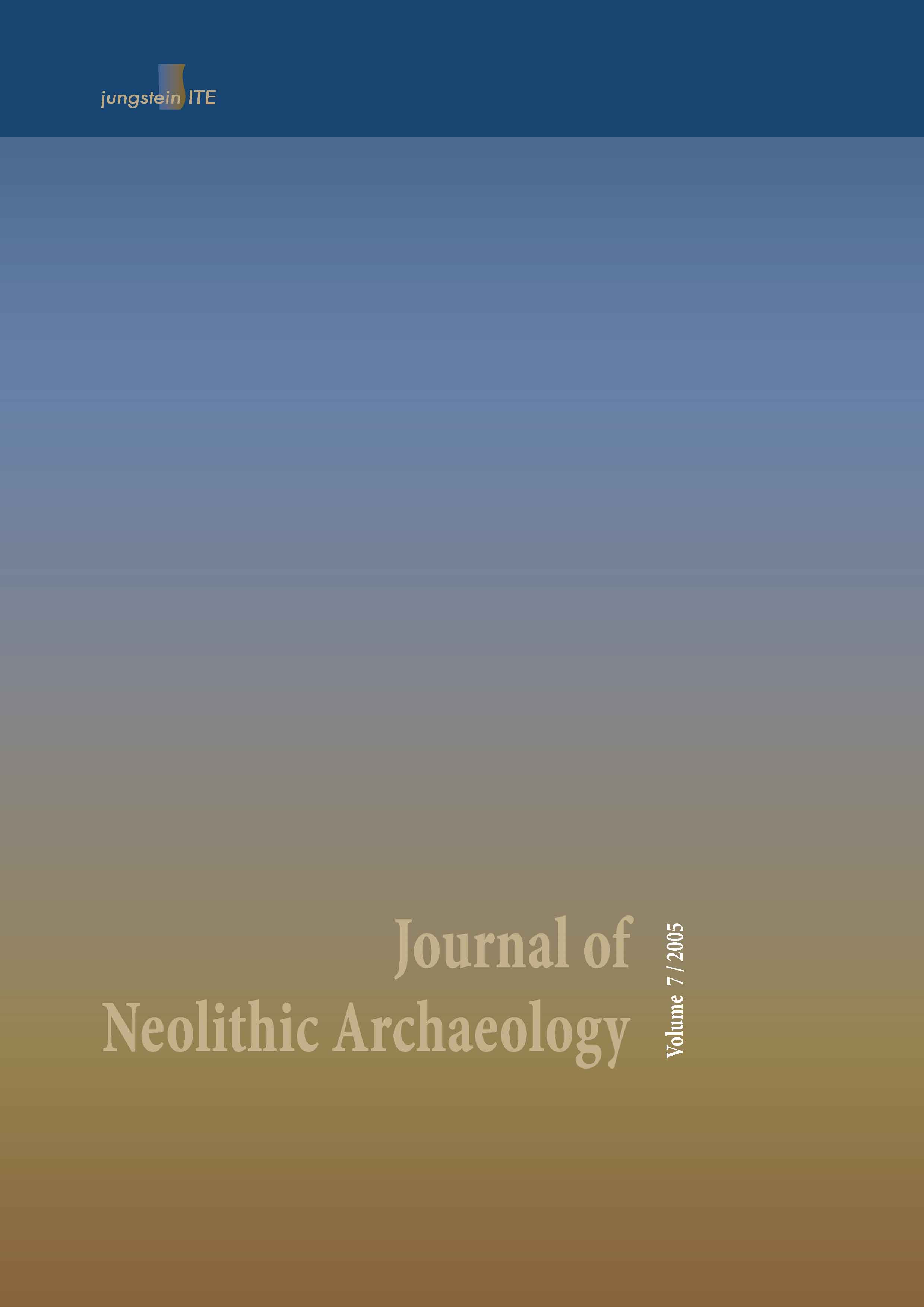Zur Bedeutung von Getreide in der Einzelgrabkultur Jütlands
Main Article Content
Abstract
The importance of cereals in the Single Grave Culture in Jutland
Until 25 years ago, the Single Grave Culture in Jutland was perceived
as a culture of nomadic cattle herders. A number of newer
settlement finds allows us today to partly revise that picture. Pollen
analysis still indicates a major importance of cattle breeding,
but
a number of finds demonstrate that cereals also played an important
role. This role can be described by a closer examination of the
information at hand today. It is possible to discern between direct
and indirect sources. Among the direct sources, the first demonstration
of beer made from cereals can be cited besides finds of
cereal grains. Further information can be gained from numerous
pollen analyses from samples of both lakes and bogs and from
fossil earth layers underneath barrows, the barrows themselves
or contents of ceramic vessels. Furthermore, impressions of cereal
grains in ceramics, ard marks underneath barrows, quern stones and some forms of pottery decorations all contribute to our knowledge.
The results of the investigation show, that naked barley was grown almost exclusively in the early and middle phases of the Single Grave Culture, where it was of minor economic importance only. In the late phase of the culture, settlement expands onto more fertile soils in Eastern Jutland. In this phase, an increasing amount of emmer wheat was grown and the overall economic importance of cereals was probably increasing. Furthermore, it is important to note a remarkable ritual importance of cereals during the whole lifetime of the Single Grave Culture. This is indicated by a high degree of handling and consuming cereals within the grave cult.
Until 25 years ago, the Single Grave Culture in Jutland was perceived
as a culture of nomadic cattle herders. A number of newer
settlement finds allows us today to partly revise that picture. Pollen
analysis still indicates a major importance of cattle breeding,
but
a number of finds demonstrate that cereals also played an important
role. This role can be described by a closer examination of the
information at hand today. It is possible to discern between direct
and indirect sources. Among the direct sources, the first demonstration
of beer made from cereals can be cited besides finds of
cereal grains. Further information can be gained from numerous
pollen analyses from samples of both lakes and bogs and from
fossil earth layers underneath barrows, the barrows themselves
or contents of ceramic vessels. Furthermore, impressions of cereal
grains in ceramics, ard marks underneath barrows, quern stones and some forms of pottery decorations all contribute to our knowledge.
The results of the investigation show, that naked barley was grown almost exclusively in the early and middle phases of the Single Grave Culture, where it was of minor economic importance only. In the late phase of the culture, settlement expands onto more fertile soils in Eastern Jutland. In this phase, an increasing amount of emmer wheat was grown and the overall economic importance of cereals was probably increasing. Furthermore, it is important to note a remarkable ritual importance of cereals during the whole lifetime of the Single Grave Culture. This is indicated by a high degree of handling and consuming cereals within the grave cult.
Article Details
How to Cite
Klassen 2005: L. Klassen, Zur Bedeutung von Getreide in der Einzelgrabkultur Jütlands. JNA, 2005. DOI: https://doi.org/10.12766/jna.2005.16.

